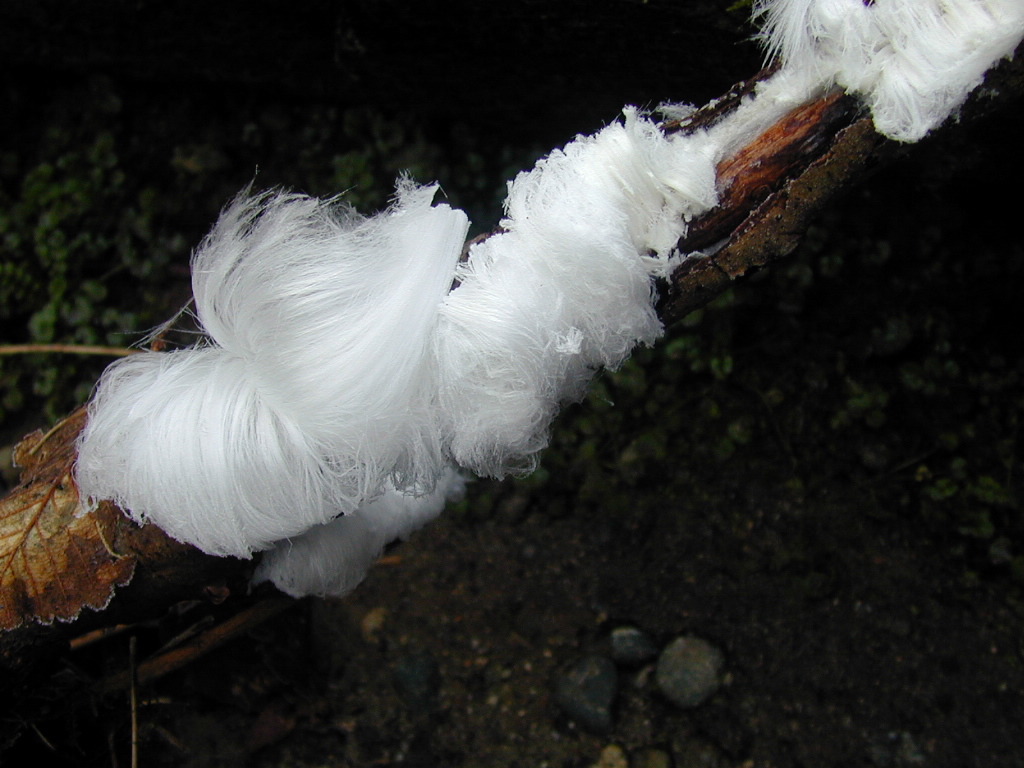

I have a number of studies in mind that would serve as ideal thesis projects for motivated MSc and PhD students. My background includes stints in engineering, physics and applied mathematics departments, and the research problems that most interest me tend to be characterized by interdisciplinary interactions across these and other fields. I am motivated by an interest in the underlying dynamics that control geophysical processes, particularly those that exhibit unexpected behavior that challenges simple intuition. An example is illustrated by the photograph above, which shows ice needles protruding from the dead wood that serves as their substrate and liquid supply. The underlying physical interactions that cause the flow of premelted liquid that supplies the ice growth are the same as those that promote frost heave and the development of stone circles, shown below. We expect similar behavior to occur beneath glaciers, but the importance to glacier dynamics and sediment entrainment has not yet been determined.
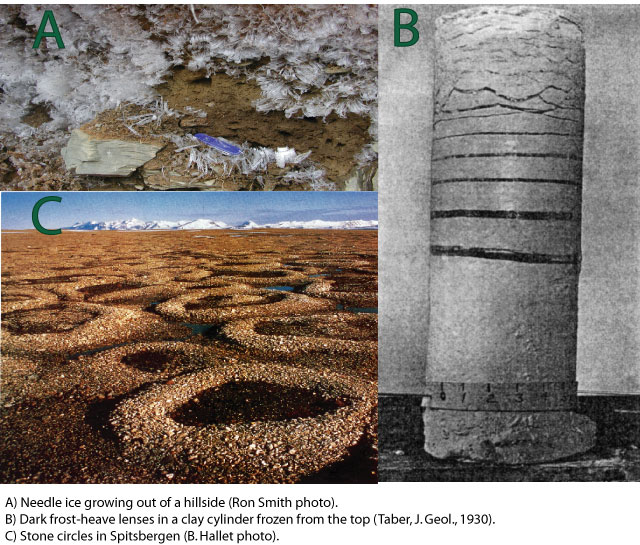
Much is rightly made of the special and unusual properties of water and ice. In some respects though, ice behaves in exactly the same way as many other minerals once they near their melting temperatures. Ice just happens to be near its melting transition right at the Earth's surface, in contrast to olivine, for example, which shares the same crystal structure. The picture below on the left, taken by Heidi Mader from the University of Bristol, shows veins of liquid water joining together at a node separating 4 grains in polycrystalline ice. This is part of a vein network similar to that shown in the diagram on the right, which derives from the early work of C.S. Smith on the phase behavior of metal alloys. The unfrozen liquid in polar ice sheets constitutes only a tiny portion of the total glacier mass, yet it can serve both as an important reservoir for the trace constituents that are used to track past climates, and as a potential habitat for microbial life on Earth, and perhaps beyond.
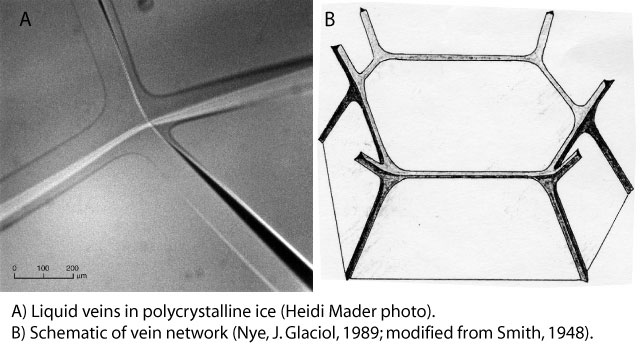
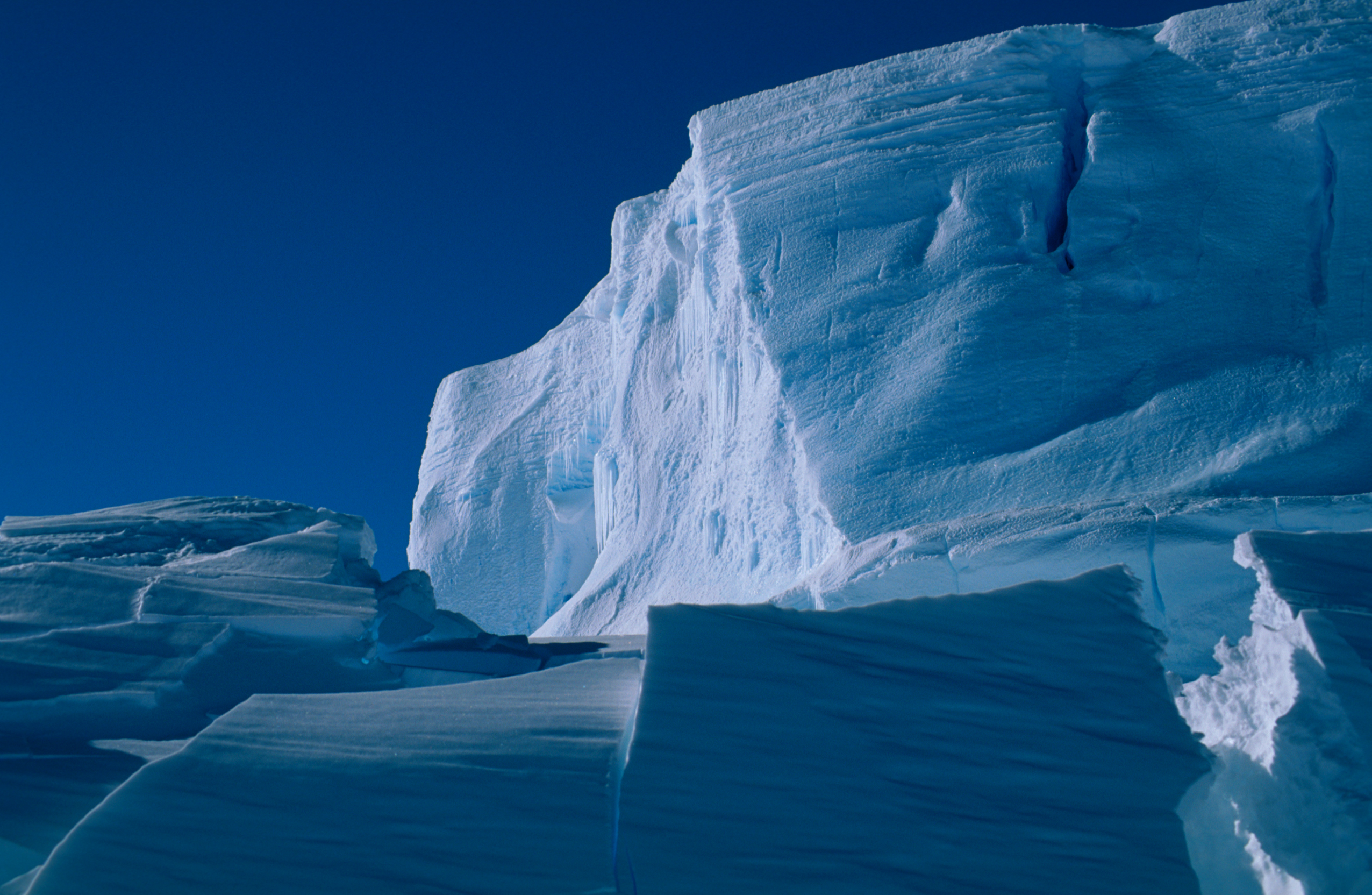
Ice skating, and the great game of hockey, are made possible by melt layers generated because of frictional heating. Somewhat surprisingly, in the rapid slip that occurs during earthquakes at moderate seismogenic depths, it seems that sufficient heat to melt the surrounding fault rocks is generated only rarely. Examples of quenched melt layers, known as pseudotachylytes, are shown in the figure below, which was taken from an interesting paper written by Otsuki and colleagues (2003). Several mechanisms have been proposed that limit the temperature rise that more typically occurs within mature fault zones, and a coherent picture of the dominant effects is beginning to emerge. However, many questions remain and models have not yet addressed the transition from frictional heating to viscous deformation that accompanies the formation of melt layers.
The largest hydrocarbon reserves on Earth lie buried in sediments beneath the seafloor and in the permafrost of polar regions. These clathrate hydrates are icy compounds consisting of water cages that are stabilized by van der Waals interactions with the enclosed gas molecules, primarily methane. As a masters student, I began my research career developing an early model for the formation of hydrate reservoirs. A prime motivation concerns the potential for clathrate destabilization and the subsequent release of vast quantities of greenhouse gases to the atmosphere, as may have happened several times in the past. Nodules and lenses of gas hydrates are routinely encountered during sampling operations. A comprehensive model is required for the development and growth of these features, as well as the implications of their decay on reservoir stability.
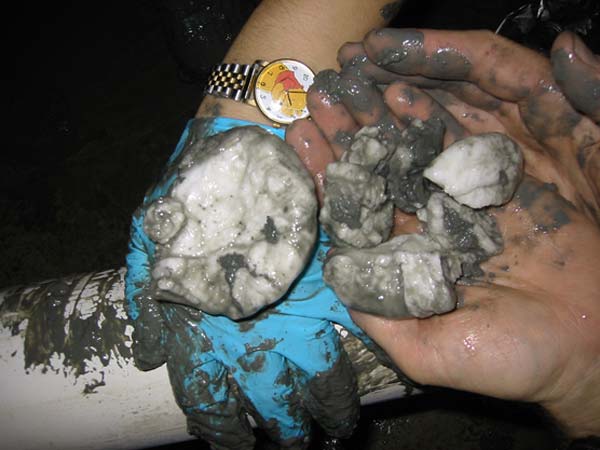
If you are curious about anything on this page and want to learn more, contact me to discuss related graduate projects. Collaborative studies involving other faculty members are also possible. Further information on the graduate studies program, including links to application materials can be found here.